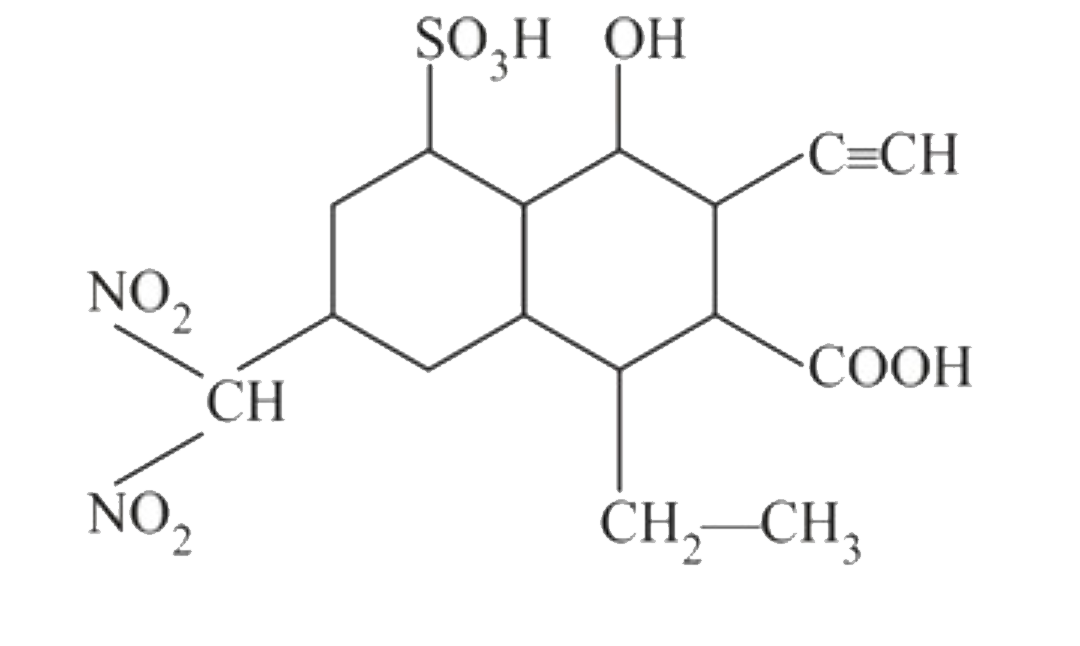How many hydrogen ions are present in 1ml of a solution of pH=13?
6.02×1013
6.02×1012
6.02×107
6.02×105
The correct Answer is:C
To find the number of hydrogen ions present in 1 ml of a solution with a pH of 13, we can follow these steps:
Step 1: Understand the pH scale
The pH scale is a measure of the hydrogen ion concentration in a solution. The formula to calculate the concentration of hydrogen ions (H+) from pH is given by:
(H+)=10−pH
Step 2: Calculate the concentration of hydrogen ions
Given that the pH of the solution is 13, we can substitute this value into the formula:
(H+)=10−13
This means the concentration of hydrogen ions in the solution is 10−13 moles per liter (M).
Step 3: Convert the concentration to moles in 1 ml
Since we want to find the number of hydrogen ions in 1 ml of solution, we need to convert the concentration from liters to milliliters. There are 1000 ml in 1 liter, so:
Moles of H+ in 1 ml=(H+)×1 ml1000 ml=10−13×11000=10−16 moles
Step 4: Use Avogadro's number to find the number of ions
Avogadro's number (NA) is 6.022×1023 entities (atoms, molecules, ions, etc.) per mole. To find the number of hydrogen ions in 1 ml, we multiply the number of moles by Avogadro's number:
Number of H+ ions=10−16 moles×6.022×1023 ions/mole
Step 5: Calculate the final number of ions
Now we perform the multiplication:
Number of H+ ions=10−16×6.022×1023=6.022×107 ions
Final Answer
Thus, the number of hydrogen ions present in 1 ml of a solution with a pH of 13 is approximately 6.022×107 ions.
---
The pH scale is a measure of the hydrogen ion concentration in a solution. The formula to calculate the concentration of hydrogen ions (H+) from pH is given by:
(H+)=10−pH
Given that the pH of the solution is 13, we can substitute this value into the formula:
(H+)=10−13
This means the concentration of hydrogen ions in the solution is 10−13 moles per liter (M).
Since we want to find the number of hydrogen ions in 1 ml of solution, we need to convert the concentration from liters to milliliters. There are 1000 ml in 1 liter, so:
Moles of H+ in 1 ml=(H+)×1 ml1000 ml=10−13×11000=10−16 moles
Avogadro's number (NA) is 6.022×1023 entities (atoms, molecules, ions, etc.) per mole. To find the number of hydrogen ions in 1 ml, we multiply the number of moles by Avogadro's number:
Number of H+ ions=10−16 moles×6.022×1023 ions/mole
Now we perform the multiplication:
Number of H+ ions=10−16×6.022×1023=6.022×107 ions
Thus, the number of hydrogen ions present in 1 ml of a solution with a pH of 13 is approximately 6.022×107 ions.
Topper's Solved these Questions
- IONIC EQUILIBIUMBook:A2ZChapter:IONIC EQUILIBIUMExercise:Salt Hydrolysis
Explore 36 Videos
- IONIC EQUILIBIUMBook:A2ZChapter:IONIC EQUILIBIUMExercise:Common Ion Effect, Ksp And Applications
Explore 38 Videos
- IONIC EQUILIBIUMBook:A2ZChapter:IONIC EQUILIBIUMExercise:Section D - Chapter End Test
Explore 30 Videos
- HYDROGENBook:A2ZChapter:HYDROGENExercise:Section D - Chapter End Test
Explore 30 Videos
- MOCK TESTBook:A2ZChapter:MOCK TESTExercise:Mock Test 2
Explore 45 Videos
Similar Questions
Knowledge Check
How many H+ ions are present in 10mL of a solution having pH=10?
A1010B10−10C6.02×1023D6.02×1011How many moles of ions are present in 250mL of a 4.4M solution of sodium sulphate?
A1.1B2.2C3.3D13How many Na+ ions are present in 100 mL of 0.25 M of NaCl solution ?
A0.025×1023B1.505×1022C15×1022D2.5×1023
How many atoms are present in 1 mole of hydrogen gas ?
View SolutionHow many acidic hydrogen atoms are present in this compound

View SolutionHow many benzylic hydrogen are present is cumene :
View SolutionHow many Na+ ions are present in 100 mL of 0.25 M of NaCl solution ?
View SolutionHow many molecules are present in 1g of hydrogen gas?
View Solution
